As a foundational piece of any menswear ensemble, a shirt should provide not only a good fit and style but also a good value for money! However, with so many shirts on the market these days, it can be challenging to find what’s right for you. As such, let’s kick off a three-part series on men’s dress shirts by looking at off-the-rack models, and how they stack up against other options.
Men’s Dress Shirts Series
Part 1: Off-the-Rack Shirts vs MTM & Custom
Part 2: Made-To-Measure Shirts vs OTR & Bespoke
Part 3: Bespoke Shirts vs MTM & OTR
If you’re interested in these sorts of differences when it comes to other types of garments, our Ready to Wear, Made to Measure, and Bespoke – Terminology Explained guide is something you’ll find insightful and enjoyable!
History of the Shirt
So, first of all, how did we get to the distinction between off-the-rack, made-to-measure, and bespoke shirts? For that, we have to look a little more at the history of shirts.
Until around the 1930s, a shirt (or what we’d call a “dress shirt” today) was actually considered to be an undergarment, just like an undershirt is considered an undergarment today. That means a dress shirt was always at least covered by a jacket – either a suit jacket or regular jacket – and often, also by a vest or waistcoat.
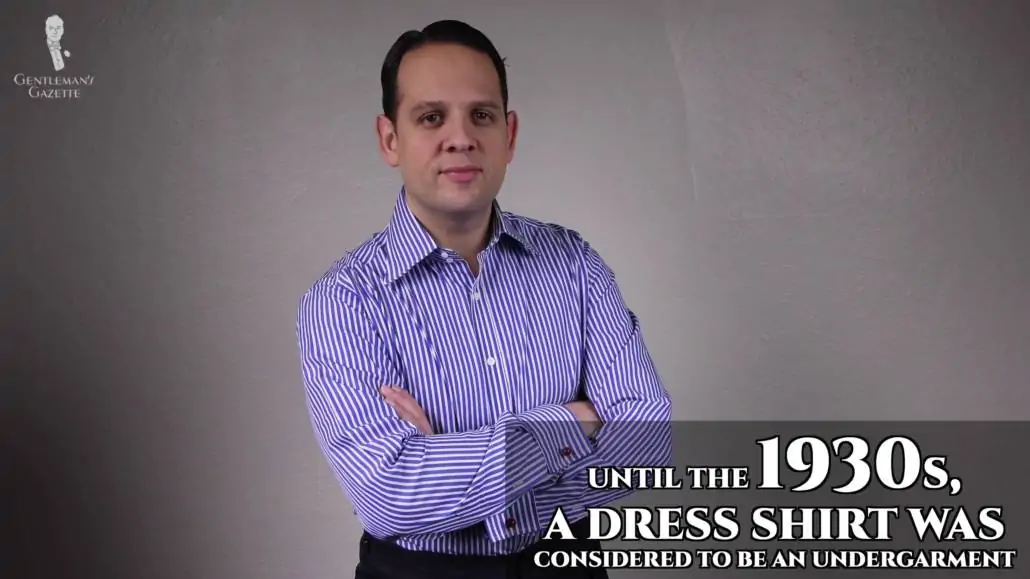
No, you actually never saw a man just wearing his dress shirt. That would probably be the equivalent of today with a man wearing just his underwear. So, back then, you really only saw portions of the shirt; you saw the cuffs, the collar, and part of the shirt front, which was often a stiff bib or just a stiffer shirt front.
At the time, central heating wasn’t as advanced, so it was more important to have more layers to be warmer even inside buildings.
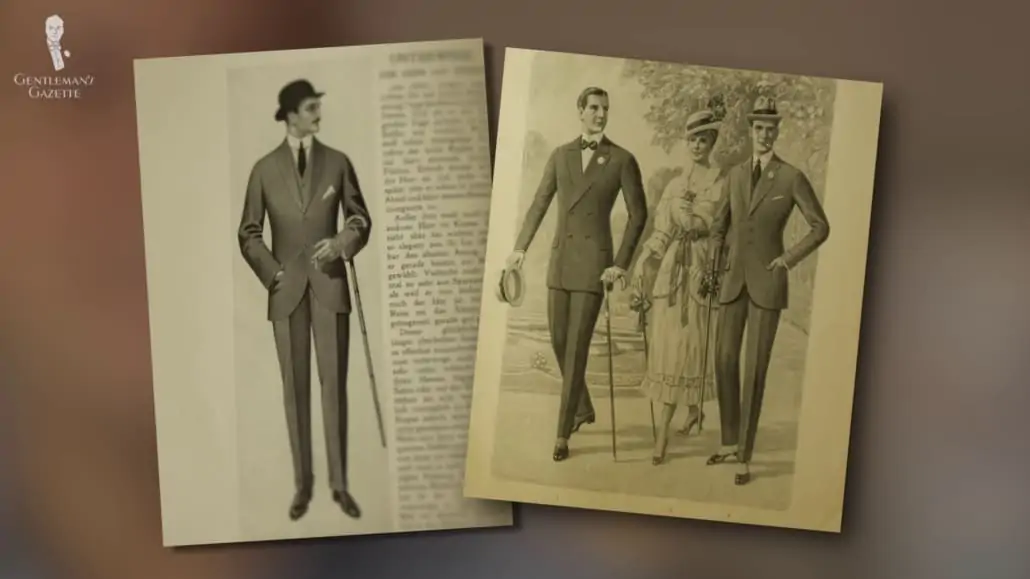
The fact that you never really saw the full shirt led to the invention of detachable collars and cuffs in the late 19th century. That meant you could always just exchange your collars and have them look pristine while the rest of the shirt wouldn’t have to be washed, laundered, and starched as frequently. That enabled men to actually wear their shirts for several days at a time without actually laundering or washing them.
Of course, the etiquette at the time was also different; men just were expected to wear hats, and they were expected to wear a jacket over their shirts.
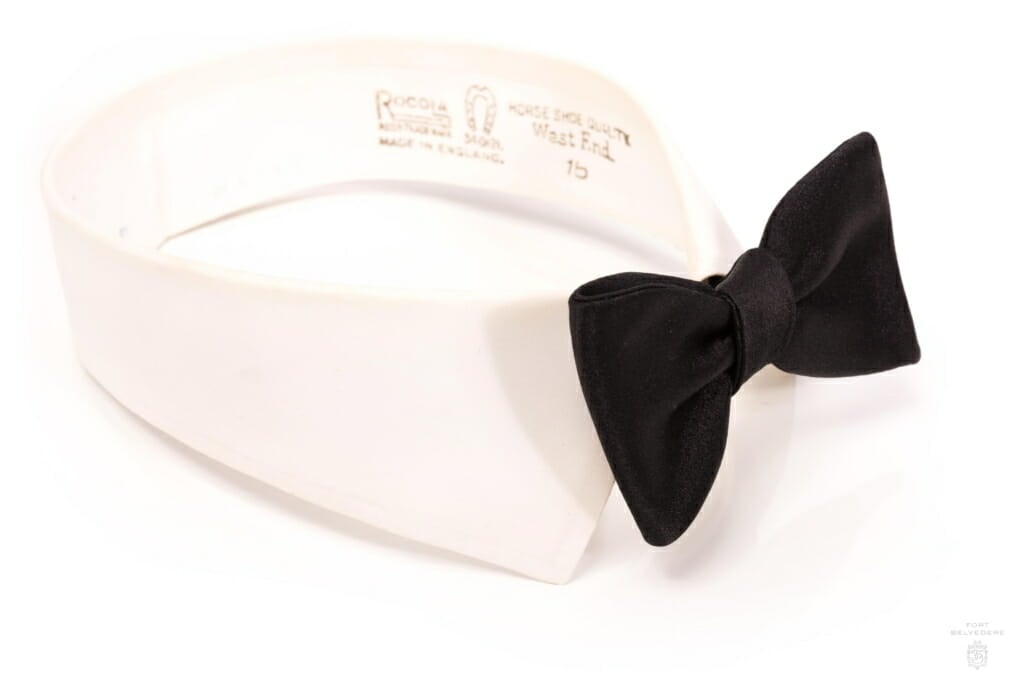
As a funny side note, the fact that you couldn’t see the full shirt even led to a Victorian oddity. Rather than actually having a shirt, you would just have the cuffs, the collar, and the bib. Our scriptwriter Aaron White, on his own channel, Antique Menswear, actually dug up one of those combinations, and it’s surprising to see that these three items actually make it look like you’re wearing a shirt.
During World War II, you had fabric rationing, and pants just didn’t lose their pleats and their cuffs, but also the waistcoat or the vest became less desirable because it needed more fabric.
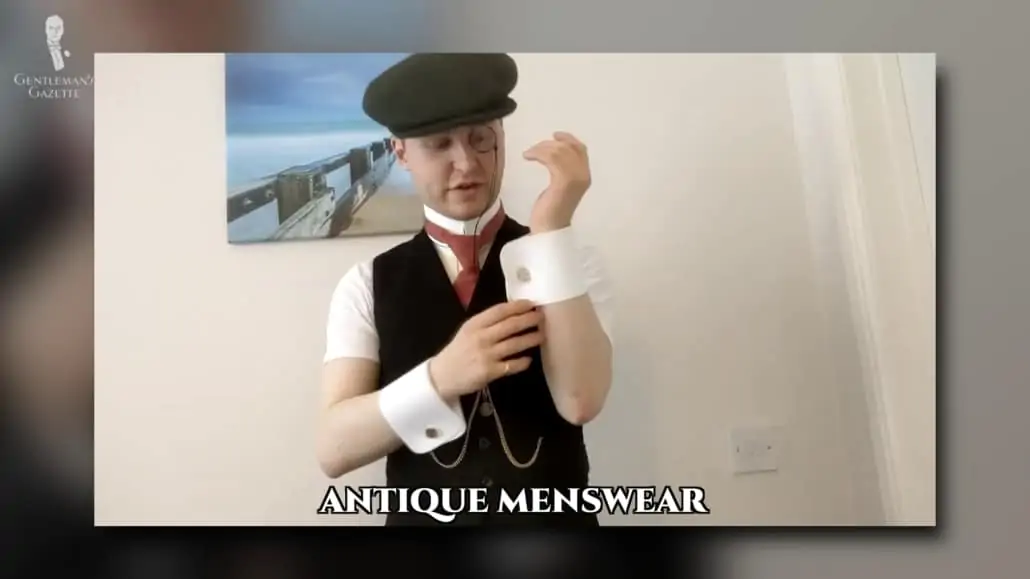
Even though double-breasted suits use more fabric than single-breasted suits, they still used less fabric than a single-breasted suit with the vest. So they became more popular, but it also meant the buttoning point was a little higher, and the overlap of the jackets led to less of the shirt being actually visible. So, the shirt maintained its role as an undergarment.
The Shirt Moves Up From Being an Undergarment
Interestingly, it wasn’t until the 1950s or 60s when men started embracing the shirt as something other than just an undergarment, as men’s fashion moved more towards what is arguably today the classic business wardrobe, which was a single-breasted suit without a vest.
That meant, though, that the shirt now became more visible, especially when you were seated, and you would unbutton your jacket. The full shirt front was visible, and maybe even the sleeves at times.
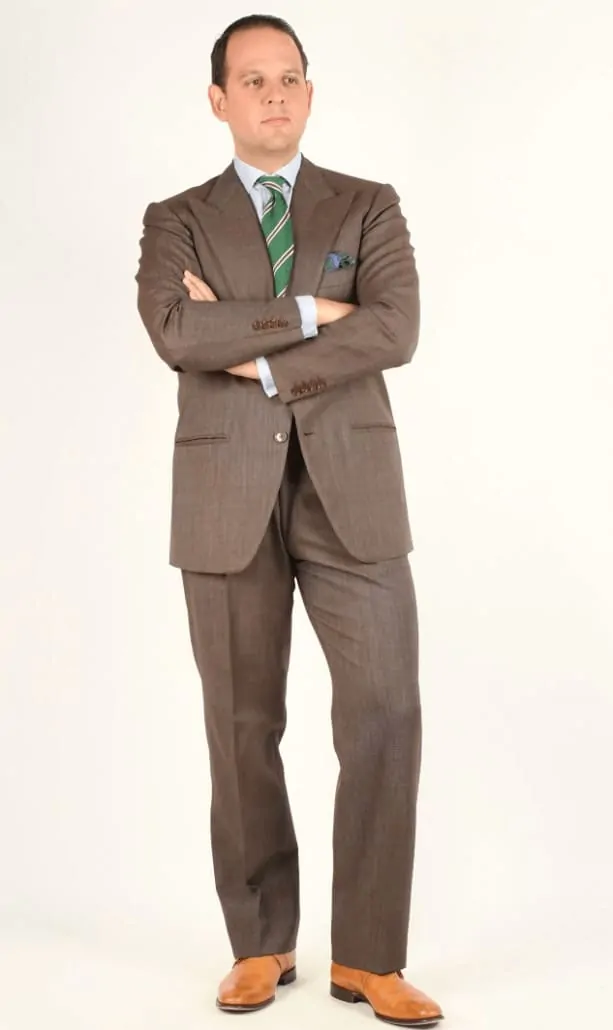
Of course, in today’s more casual world, it is not considered to be impolite by most people if you take off your jacket when you sit at a table, or you sit at your desk chair, or you drive in your car. Still, back then, the vast majority of all shirts out there were not custom-tailored, but they were off-the-rack shirts. You could only afford a bespoke shirt if you were filthy rich.
A hundred years ago, mostly everybody else would have gotten a universally fitted dress shirt. Yes, it actually fit like a tent, and it was just huge, but the idea was that you have one shirt that fits everybody literally. While the color sizes were obviously different and many shirts were even made for detachable collars in their own special sizing, the sleeves were all about the same length, and so were the overall shirts, which were quite long because they were tucked in and they were supposed to protect also the pants and not just the jacket.
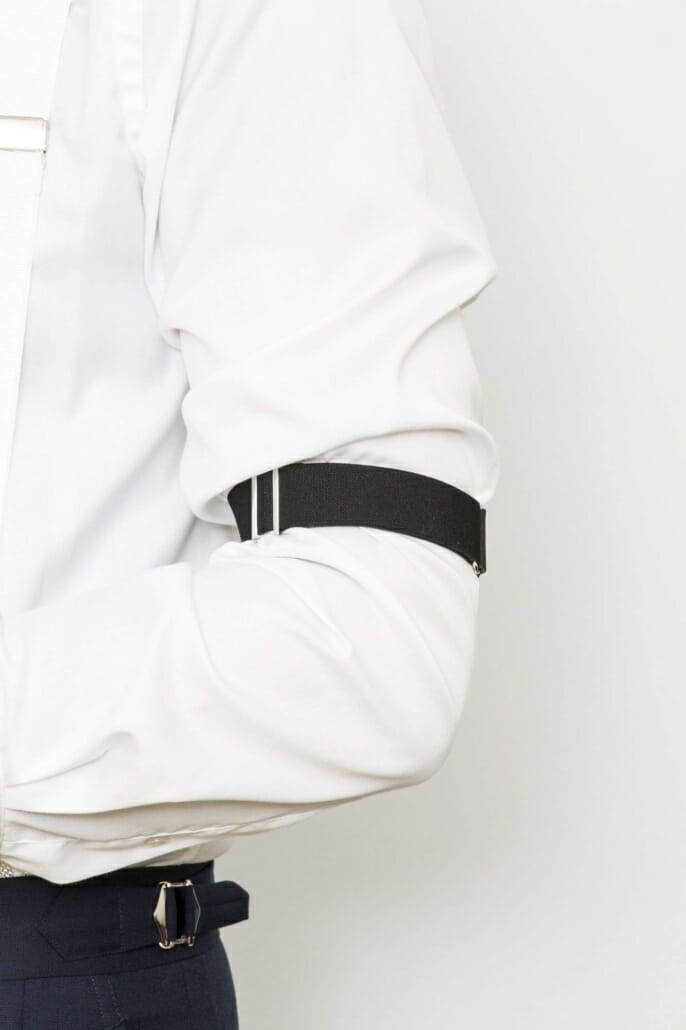
Of course, men still had different lengths of arms, and so they adjusted the length of their sleeves with the help of sleeve garters, which today is only something you see worn by vintage aficionados or maybe by a bartender at a Prohibition-era bar.
Modern-Day Men’s Shirts
Nowadays, many men prefer a tighter shirt fit and in combination with a separate collar size, sleeve length, and different fit options ranging from slim fit to a custom fit or a classic fit and anything in between. You literally have hundreds of fit options out there on the market today.
What may seem a little daunting at first, of course, you compare the options down and, for example, a size 15, or a size 40 in European, sometimes comes in three different sleeve lengths or maybe just two. And then, those probably just come in two different fit options – the classic fit and the slim fit. But that, of course, depends on the brand.
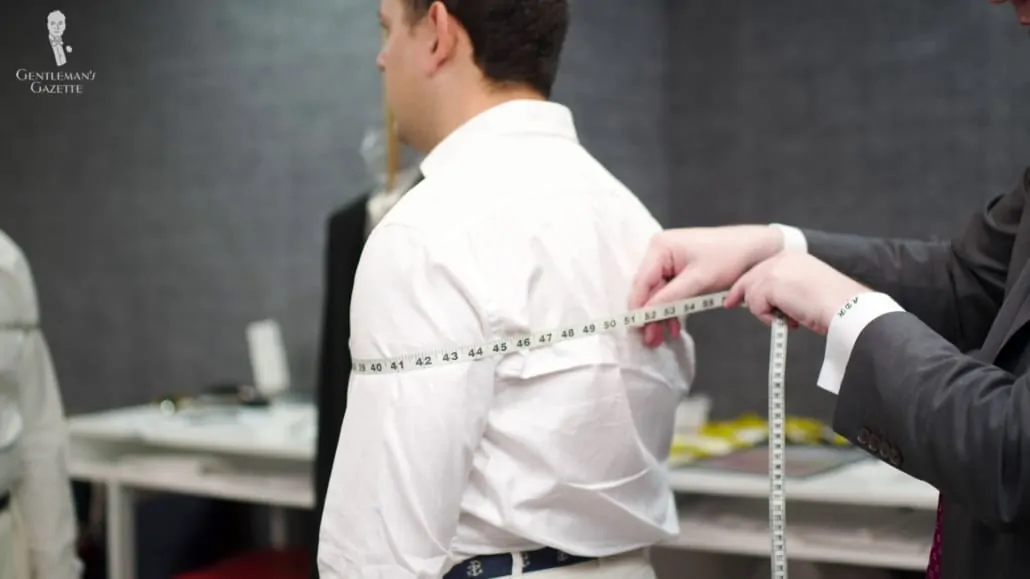
With the advancement of IT technology and just-in-time production, the whole field of made-to-measure became much more popular because it allowed a higher degree of customization without the extremely high price tag of bespoke. So, now, that’s how we ended up with off-the-rack, made-to-measure, and bespoke shirts.
OTR vs. MTM vs. Custom Shirts
Off-the-Rack Shirt
As the name implies, it is a shirt that you can take off the rack. It is completely produced and ready to be worn right then and there when you buy it. The biggest pro of an off-the-rack shirt is that it’s relatively inexpensive, and, at the same time, with all the different fit options, it provides you with a reasonable fit.
The vast majority of shirts today are off-the-rack, and most men out there can afford to buy one. Of course, there are high fashion brands, which charge an arm and a leg for their off-the-rack shirts. But, in general, you can find off-the-rack shirts at very low entry-level points. For example, at Walmart or Costco.
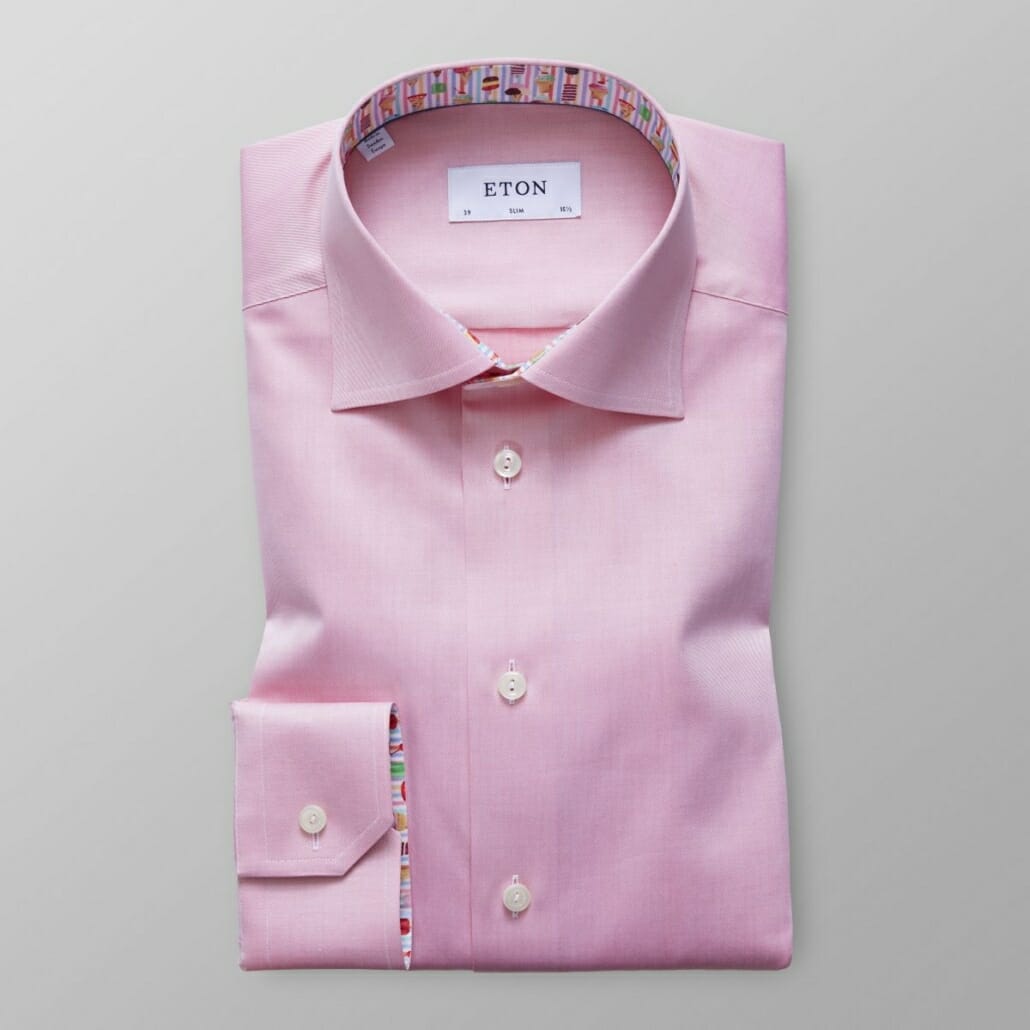
If you want to take a step up from there, you can find manufacturers specializing in shirts, such as Charles Tyrwhitt, or places like Hawes & Curtis or Spier & Mackay. Those brands typically offer better fabrics at a slightly higher price point, but it’s still affordable.
Unlike cheaper brands, which just offer you different sizes based on the neck size. Better brands will offer you, at least, a neck size, a sleeve length size, and a different fit type. And if you’re into classic men’s clothing, we strongly suggest that you buy those kinds of shirts because the fit is much improved to a shirt that just fits you around your neck but has sleeves that are too short, for example.
Pros of Off-the-Rack Shirts
You Have A Myriad of Options
If you consider all the different fabric types, collar options, cuff options, and placket options, you have hundreds, if not thousands, of different options to choose from. As with anything, though, producing at scale increases efficiencies and lowers the price per unit.
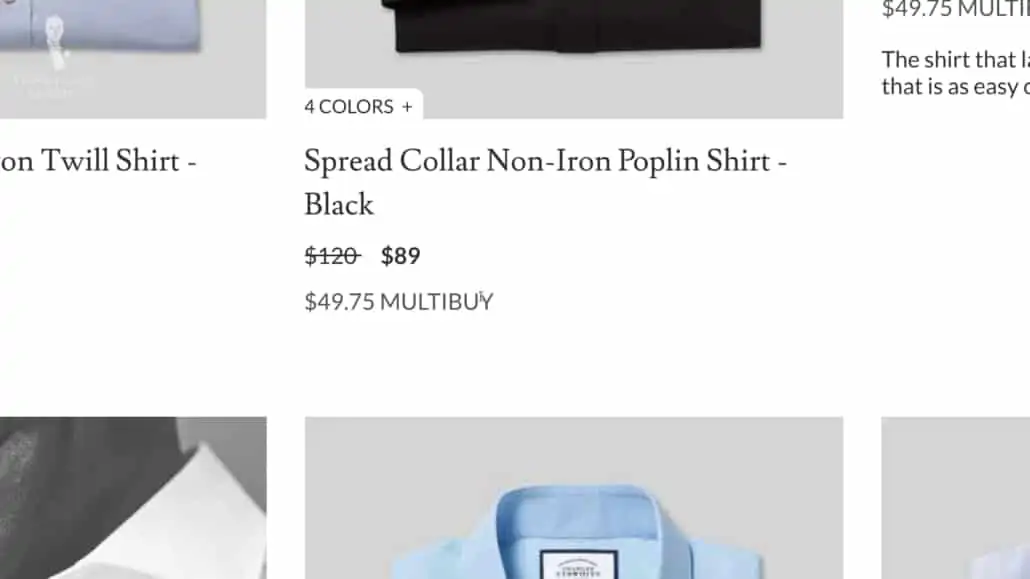
Some brands might even offer you discounted rates for buying four shirts rather than just one shirt.
You Can See It and Get It Right then and There
The other big pro of a ready-to-wear shirt is that what you see is what you get, and you can just go online now or go to a store, buy the shirt, and you have it right then and there. There’s no wait time involved. You can simply unpack the shirt; you can touch it, you can feel the softness or stiffness of the collar, you can feel the softness of the fabric, you can see how it wrinkles, you can see the details of the bracket, you can see the buttonholes, how the buttons are sewn on, and how you like the cuffs and the sleeve length or the overall body length.
Most people don’t even think about it, but it is a huge plus of an off-the-rack shirt that you can truly see and experience everything before buying it.
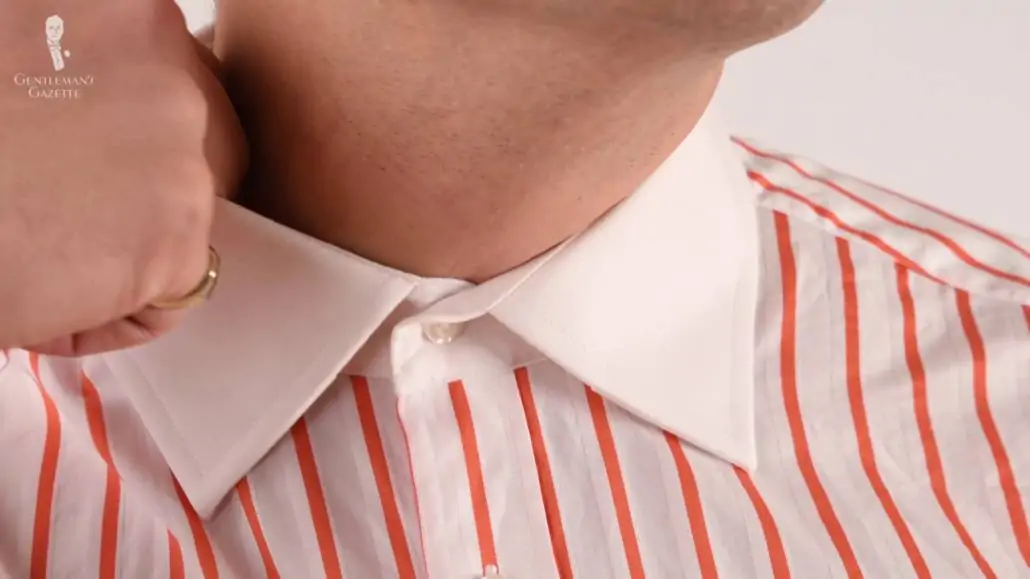
With a custom product, you have to have much more imagination. And with made-to-measure items, they may show you the different options. With the bespoke item, the sky’s the limit, and it’s very different.
Good Value and Reasonable Fit
Because the off-the-rack shirts are a really great way to kick-start your classic dress shirt wardrobe because it’s limited in what you need at first, and you pretty much get an excellent value with a reasonable fit.
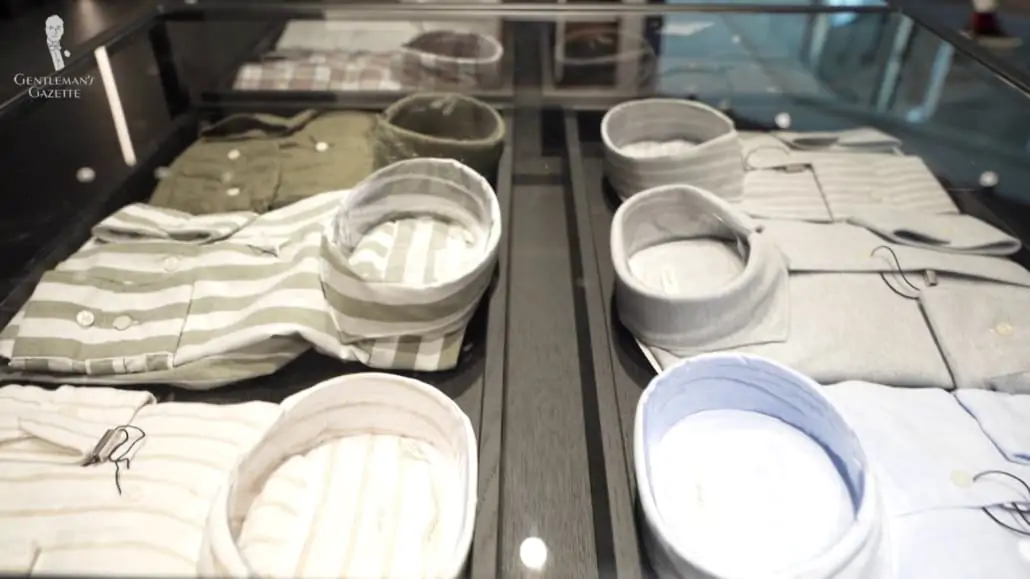
Shirts are also consumables, so by the time your tastes have evolved, and your classic style knowledge has increased, you are ready to buy maybe shirts a step or two up from what you bought initially. So, if you’re at the very beginning and you’re not sure what shirts to buy, check out our guide to the 10 first shirts a man should buy if they’re interested in a classic style.
Cons of Off-the-rack Shirts
Limited Choices
A big one is obviously the limited choice that you never get exactly what you want. There’s zero input from your side about the shirt because it’s already made. For example, you might like the collar style or the cuff style, or the placket style, but you may be unhappy with the choice of buttons, the color, the thickness of the fabric, how it wrinkles, or the cut.
Naturally, some of these items may not be a deal-breaker for you, and especially if you start out, you may not even notice them. However, as the interest in classic men’s style progresses, chances are you’ll be more interested in the details of items, and you’ll notice nuances that you were oblivious to before. In the same vein, your criteria of what constitutes a good fit will likely change over time.
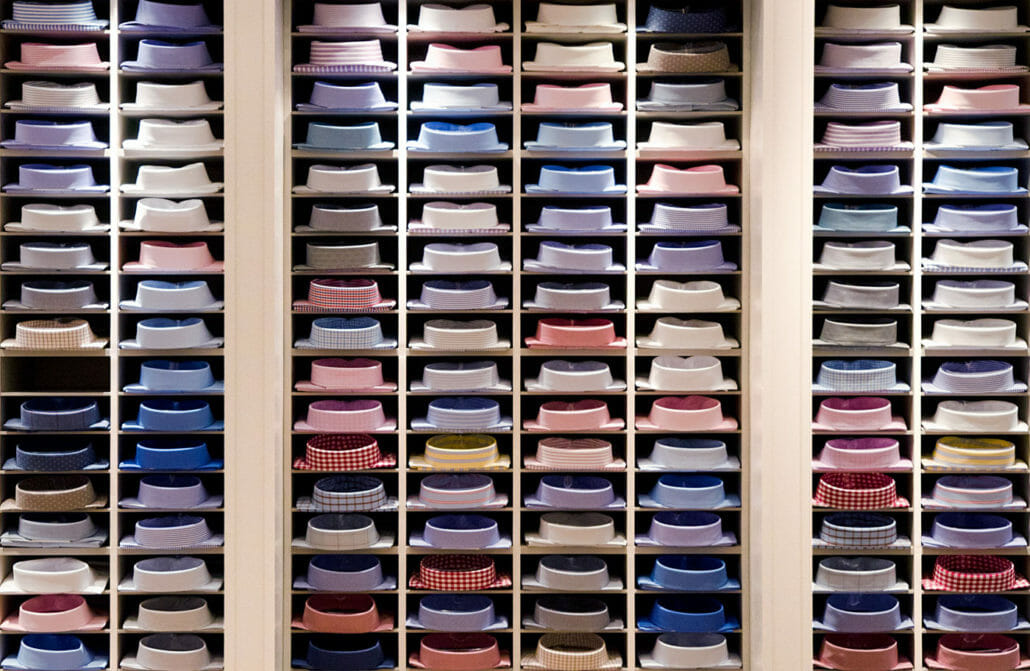
At the end of the day, it all depends on where you are at in your style journey and what satisfies your current needs.
If you’re like me and you have a long torso and long arms, you want shirts with a long torso and something that accommodates your long arms. At first, though, you may not even realize that you can buy shirts with different sleeve lengths or different body lengths.
Later on, maybe you start appreciating hand-sewn buttonholes, or you realize that you have a long neck and, therefore, a taller collar looks more flattering on you. And then, of course, not all the fabrics that you like or want comes with the right choices that you desire.
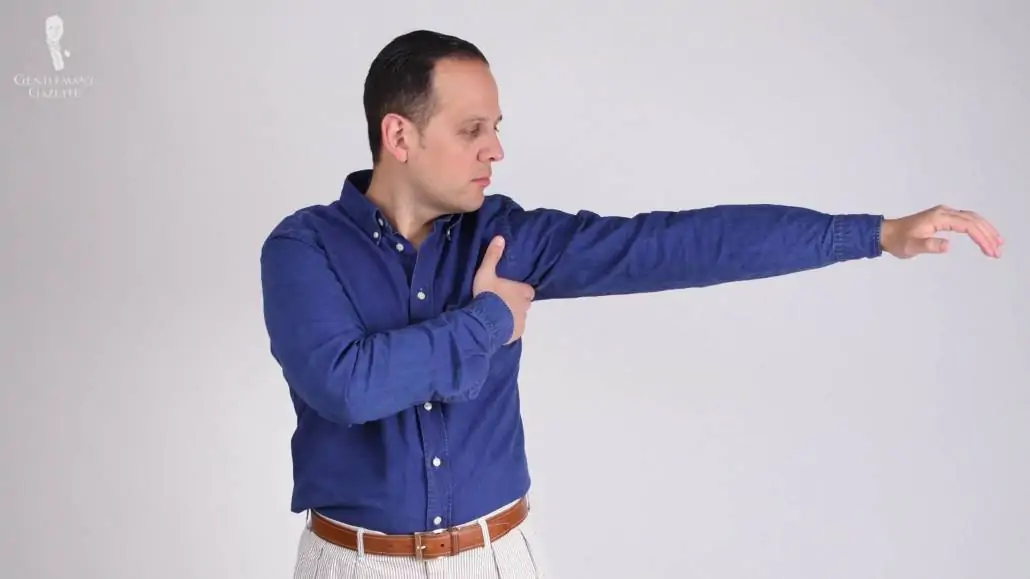
Also, as your wardrobe grows and you’ve got your basics covered, off-the-rack shirts become increasingly limited.
Looking for The Right Manufacturer Takes Time
Another con is that it can be time-consuming to find the right manufacturer with the right fit, the right collar, and fabric options that you want. No two people are built the same way, and, at the end of the day, we’re all, at least in some portions, slightly asymmetrical.
So, when you realize that one of your shoulders is actually more sloped than the other or that one arm is slightly longer than the other, you also realize all the limitations and imperfections in the way a dress shirt fits.
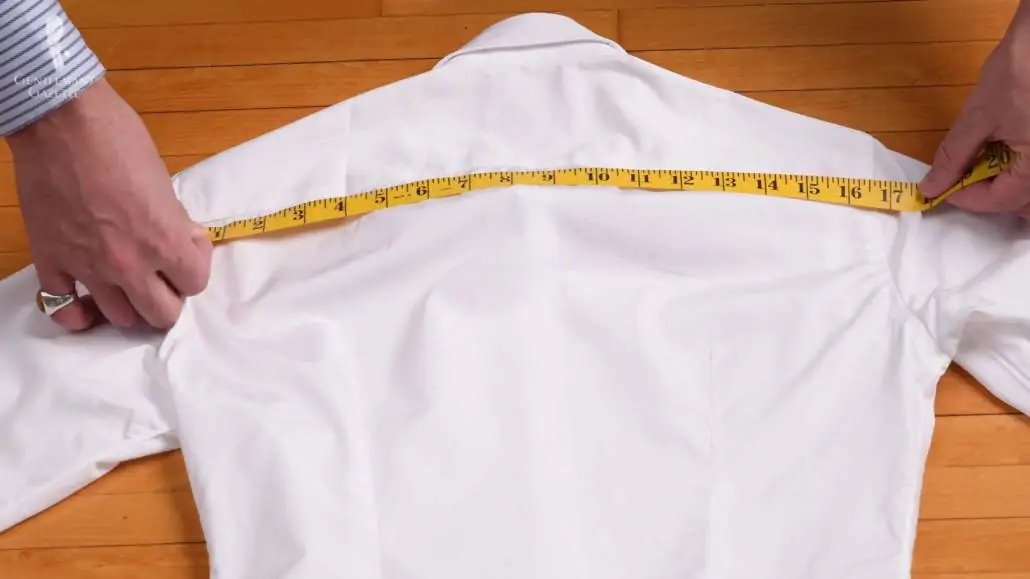
Usually, that’s expressed in wrinkles. If something is too tight, you get X wrinkles. If one side is too low, you get wrinkles underneath your armpit and so forth. And then, of course, there’s also the fact that no two companies use the exact same sizing system.
Yes, most companies will have a collar size, but let’s say it’s a size 16; in some brands, the actual measurement maybe 15 and a half, and in others, it may be 16 and a half.
In fact, in our tests of different brands, we’ve encountered that a single size can range in the actual measured distance in about two to two and a half centimeters, which is about one inch, and that is huge.
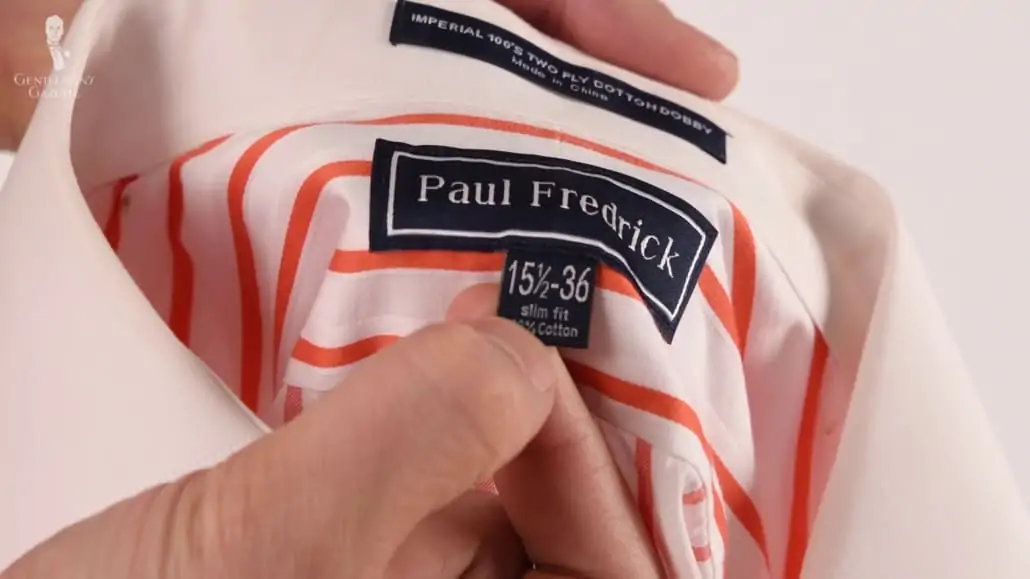
Also, not all collar sizes come in all sleeve lengths. So, let’s say you have a very slim neck but a very long arm. It may be really challenging for you to find a well-fitting shirt off the rack. And then, of course, some companies don’t want to stock all sizes in all fabrics, so they come up with their own numbering system, their own fit descriptions, and so it takes time for you to understand what is it, how does it fit in what I already know, and what’s actually the best shirt for me.
High Costs of Alterations
Yes, shirts, just like many other clothing items, can be altered to a point. For example, you can always put in darts to slim down your shirt. On the flip side, you can’t just let out the seam because there’s no fabric reserve.
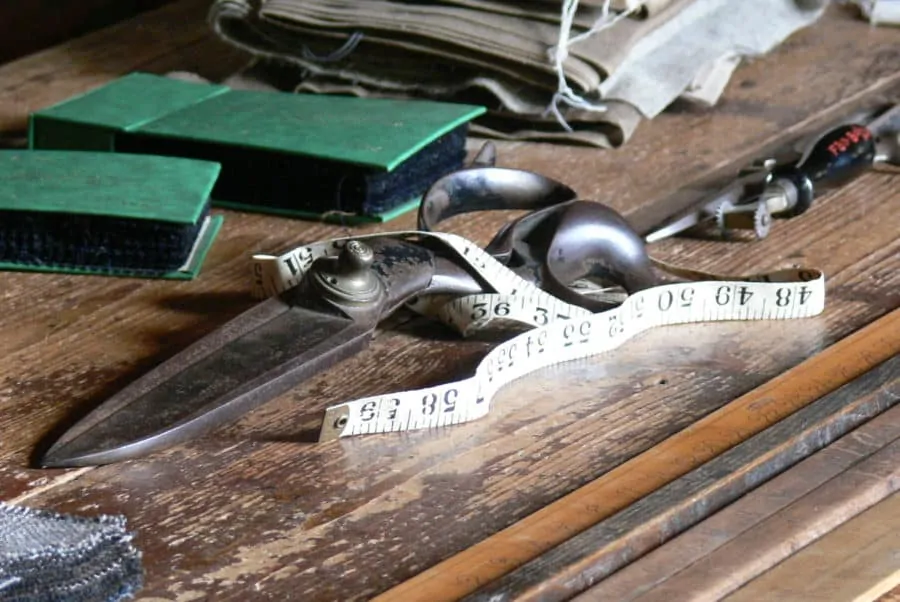
Likewise, you can’t slim down a sleeve without having a weird dart on your sleeve or make the armhole tighter. And naturally, a trip to the alterations tailor doesn’t just take time but also money, which brings up the cost of off-the-rack, which was initially one of the big pros of it being very inexpensive and affordable.
Conclusion
In all fairness, it probably requires just as much time to create a made-to-measure shirt and even more time to create a bespoke shirt, so if you want a well-fitting shirt that works for you, be ready to invest some time.
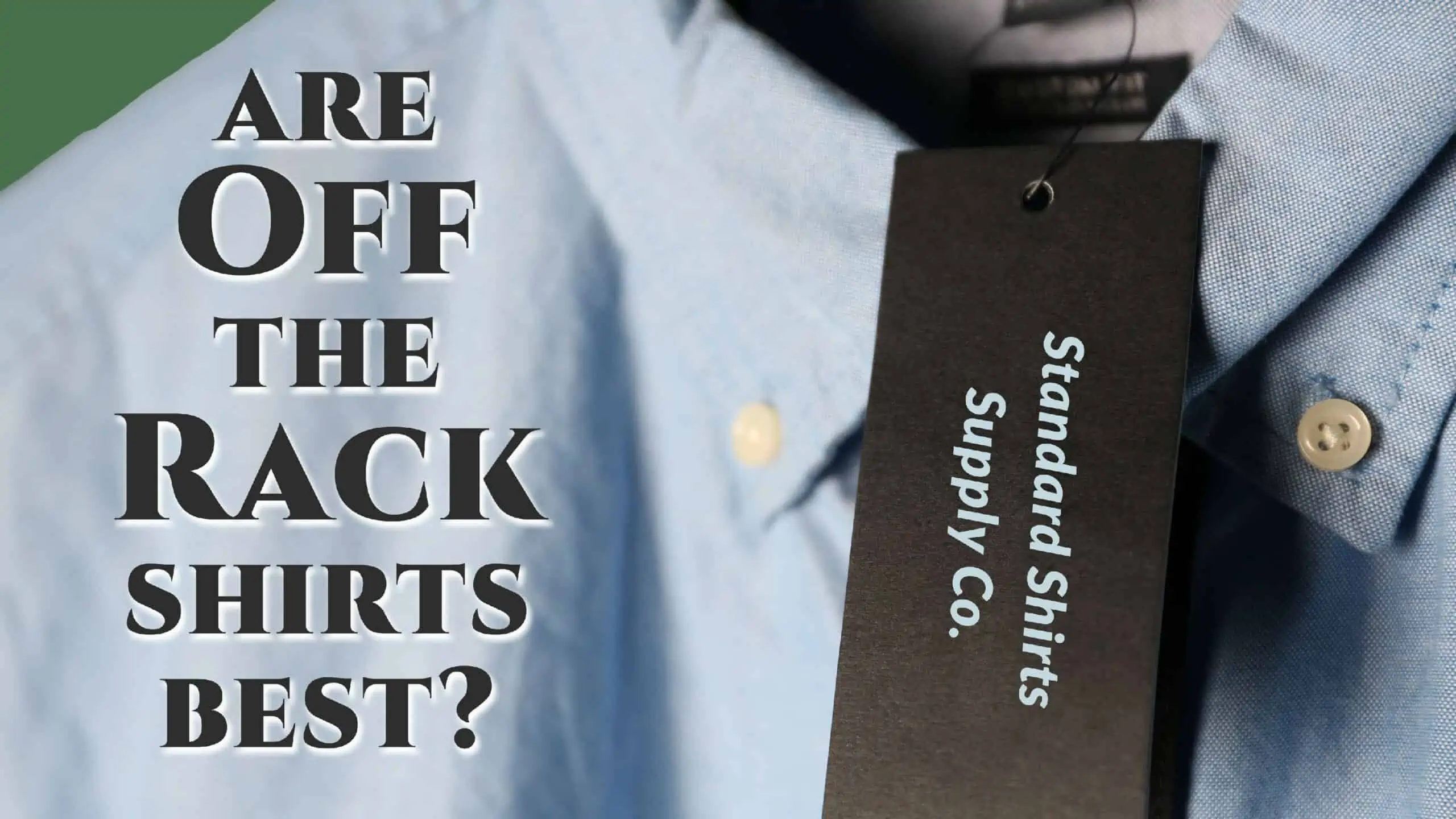
Raphael,
Please button the second button on your shirt (the one below the collar button),
If Raphael buttons the second button we won’t be able to see the gold chains. :-D
I look forward to the remaining videos in this series. I second the remark about the top shirt buttons: the difference between leaving one undone and leaving two undone is the difference between “casual” and “douchy.” By the way, the name “Tyrwhitt” is pronounced “tirrit,” disregarding the “wh.”
Douchy’s in the eye of the beholder.
I don’t know where you got the idea that in the 30’s to the 60’s a shirt was simply considered an undergarment ? We well know from films, photos of those years that, say middle & upper classes wore shirts in the same manner as today. Of course the style of collars changed over time. So whilst your article was most interesting and comprehensive I wonder whether you will amend your introduction & repeated elsewhere for the sake of accuracy ?
My understanding is that the dress shirt was considered LIKE an undergarment because unlike in this day and age, it wasn’t the done thing for gentlemen to remove jackets and simply wear a shirt and tie as the outer garment. Have a look at films in these decades and you’ll see what I mean; in The Seven Year Itch (1955), Tommy Ewell doesn’t even loosen his tie when he arrives home from work let alone remove it or his jacket altogether or change into less formal attire. He certainly never removed his jacket at work. At first it amused me until I remembered wearing shirt sleeves was seen as improper back then.
Also if someone finds an off-the-rack shirt that fits them perfectly, it’s easy to branch out into different options from the same manufacturer.
Several years ago I was attending a reunion in a very casual setting at a base in the Mojave. While there I met an old friend who invited me to a base dinner he was attending the next evening. As I had no appropriate clothes for this event, he kindly lent me a tie and a blazer which fit very well, and I had a pair of slacks that would serve adequately. I drove to a nearby town looking for a dress shirt. I spotted sale bin (which I would normally shun) in a department store and found my size in a bargain shirt for under $10.00! The shirt fit as if it was custom tailored for me. Sleeves, neck, body were perfect. I was sorry when it eventually wore out. Lesson learned: unless I’m certain I won’t need them, I always travel with a set of dress clothes.
Great article on dress shirts. I’m always fighting for proper fit. There’s a photo of Sven wearing a beautiful blue striped shirt with long collar tabs. I love the look but can’t find shirts like that anywhere. Can you tell me where that shirt is from, and do you know of shirt makers who still make that style? Thanks!
Donald, that shirt Sven is wearing is called a reverse stripe (White stripe on dark blue background). Any classic custom shirt maker will have those fabrications. Check with firms like Hamilton, Individualized Shirts or (if they survive….) Brooks Brothers.
Hi Donald! The shirt was custom made for Raphael. :)
For me the collar is the most important aspect of the shirt. The style of the collar can make or break your outfit.
Dear Raphael,
When can I buy the new socks in your shop, they are awesome???
Hi Peter! We are currently upgrading our shop. The socks will be available once it goes live! :)
Thanks for sharing wonderful article
In the 1970’s I worked as assistant to the design of men’s fashions at Cluett Peabody & Co., makers of Arrow shirts. At that time the revolution in men’s wear was bursting on the scene. Arrow had a number for men’s torso patterns which were used for different line in the Company’s offerings. Each torso suite had a marketing name, and a specific (for the season) suite of collars, and cough combinations. Then there were the fabrics, which generally numbered between twenty-five and fifty. The Staple line consisted of perhaps twelve or fifteen fabrics and change very little year on year. The range of collar sizes and level lengths meant that a particular fabric/collar combination might be offered in 20 to 30 sizes. The less apparent technical revolution occurred in the development of wash-and-wear fabrics and linings. In terms of men’s wear appearances Of course in the design room we made custom shirts for all sorts of important customers. It was an exciting time.